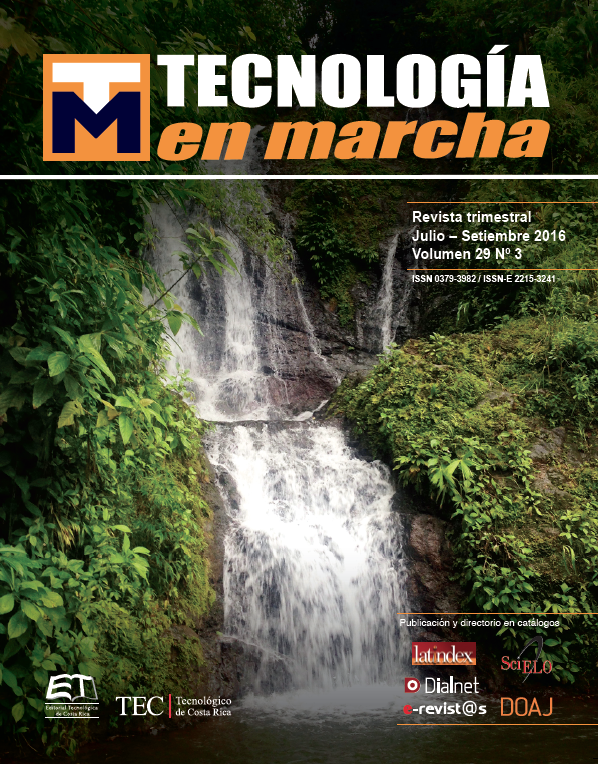Methodology for the quantification of the carbon footprint of buildings in Costa Rica and its application on the residential module Trópika
Main Article Content
Abstract
International methodologies for measuring carbon footprint of products have been analyzed in order to identify which is the best suited for the Costa Rican building sector. The ISO / TS 14067: 2013 Carbon Footprint of products-Requirements and guidelines for quantification and communication, have been selected and tailored to better fit conditions Costa Rica. A spreadsheet tool to calculate the carbon footprint of any building project in the local context or regionally (if tailored) was designed and called Construye Neutral.
Both, the selected methodology and the tool have been applied to Trópika, a habitation module designed and built for the Solar Decathlon Europe 2014 by students of the Tecnológico de Costa Rica.
A partial LCA, from cradle to construction was conducted for the Trópika house unit. The estimated embodied carbon was 28 tons CO2e for the 81 m2 house, or 345 kg CO2e per m2 of useable floor area. Carbon fixation was 15 tons of CO2e, and the final balance was 13 tons of CO2e. These results were validated by comparing them with those obtained in other tools such as SimaPro V7.3.3 as well as data in literature.
Article Details
Los autores conservan los derechos de autor y ceden a la revista el derecho de la primera publicación y pueda editarlo, reproducirlo, distribuirlo, exhibirlo y comunicarlo en el país y en el extranjero mediante medios impresos y electrónicos. Asimismo, asumen el compromiso sobre cualquier litigio o reclamación relacionada con derechos de propiedad intelectual, exonerando de responsabilidad a la Editorial Tecnológica de Costa Rica. Además, se establece que los autores pueden realizar otros acuerdos contractuales independientes y adicionales para la distribución no exclusiva de la versión del artículo publicado en esta revista (p. ej., incluirlo en un repositorio institucional o publicarlo en un libro) siempre que indiquen claramente que el trabajo se publicó por primera vez en esta revista.

